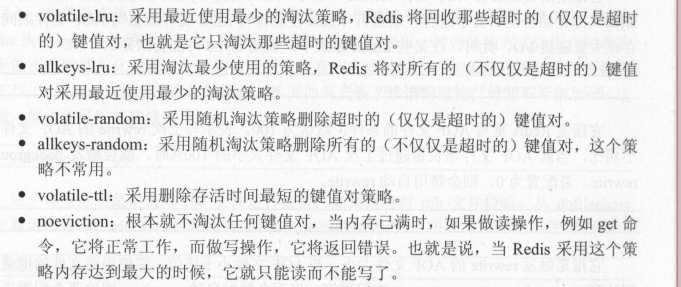标签:list instance local art ide ted dbid critical 情况下
redis.conf文件
在Linux进行文件的查看!
units单位:
8 # Note on units: when memory size is needed, it is possible to specify 9 # it in the usual form of 1k 5GB 4M and so forth: 10 # 11 # 1k => 1000 bytes 12 # 1kb => 1024 bytes 13 # 1m => 1000000 bytes 14 # 1mb => 1024*1024 bytes 15 # 1g => 1000000000 bytes 16 # 1gb => 1024*1024*1024 bytes 17 # 18 # units are case insensitive so 1GB 1Gb 1gB are all the same.
20 ################################## INCLUDES ############################## 22 # Include one or more other config files here. This is useful if you 23 # have a standard template that goes to all Redis servers but also need 24 # to customize a few per-server settings. Include files can include 25 # other files, so use this wisely. 26 # 27 # Notice option "include" won‘t be rewritten by command "CONFIG REWRITE" 28 # from admin or Redis Sentinel. Since Redis always uses the last processed 29 # line as value of a configuration directive, you‘d better put includes 30 # at the beginning of this file to avoid overwriting config change at runti me. 31 # 32 # If instead you are interested in using includes to override configuration 33 # options, it is better to use include as the last line. 34 # 35 # include /path/to/local.conf
GENERAL
141 # If a pid file is specified, Redis writes it where specified at startup 142 # and removes it at exit. 143 # 144 # When the server runs non daemonized, no pid file is created if none is 145 # specified in the configuration. When the server is daemonized, the pid fi le 146 # is used even if not specified, defaulting to "/var/run/redis.pid". 147 # 148 # Creating a pid file is best effort: if Redis is not able to create it 149 # nothing bad happens, the server will start and run normally. 150 pidfile /var/run/redis_6379.pid
126 # By default Redis does not run as a daemon. Use ‘yes‘ if you need it. 127 # Note that Redis will write a pid file in /var/run/redis.pid when daemoniz ed. 128 daemonize yes
82 # Accept connections on the specified port, default is 6379 (IANA #815344). 83 # If port 0 is specified Redis will not listen on a TCP socket. 84 port 6379
# TCP listen() backlog. # # In high requests-per-second environments you need an high backlog in order # to avoid slow clients connections issues. Note that the Linux kernel # will silently truncate it to the value of /proc/sys/net/core/somaxconn so # make sure to raise both the value of somaxconn and tcp_max_syn_backlog # in order to get the desired effect. tcp-backlog 511 tcp-backlog 设置tcp的backlog,backlog其实是一个连接队列,backlog队列总和=未完成三次握手队列 + 已经完成三次握手队列。 在高并发环境下你需要一个高backlog值来避免慢客户端连接问题。注意Linux内核会将这个值减小到 /proc/sys/net/core/somaxconn的值,所以需要确认增大somaxconn和tcp_max_syn_backlog两个值 来达到想要的效果
# Close the connection after a client is idle for N seconds (0 to disable) timeout 0
# IF YOU ARE SURE YOU WANT YOUR INSTANCE TO LISTEN TO ALL THE INTERFACES # JUST COMMENT THE FOLLOWING LINE. # ~~~~~~~~~~~~~~~~~~~~~~~~~~~~~~~~~~~~~~~~~~~~~~~~~~~~~~~~~~~~~~~~~~~~~~~~ bind 127.0.0.1
# On Linux, the specified value (in seconds) is the period used to send ACKs. # Note that to close the connection the double of the time is needed. # On other kernels the period depends on the kernel configuration. # # A reasonable value for this option is 300 seconds, which is the new # Redis default starting with Redis 3.2.1. tcp-keepalive 300 单位为秒,如果设置为0,则不会进行Keepalive检测,建议设置成60
# Specify the server verbosity level. # This can be one of: # debug (a lot of information, useful for development/testing) # verbose (many rarely useful info, but not a mess like the debug level) # notice (moderately verbose, what you want in production probably) # warning (only very important / critical messages are logged) loglevel notice 日志级别
# Specify the log file name. Also the empty string can be used to force # Redis to log on the standard output. Note that if you use standard # output for logging but daemonize, logs will be sent to /dev/null logfile "" 日志的名字
# Set the number of databases. The default database is DB 0, you can select # a different one on a per-connection basis using SELECT <dbid> where # dbid is a number between 0 and ‘databases‘-1 databases 16 系统默认的库16个 默认使用0库
# To enable logging to the system logger, just set ‘syslog-enabled‘ to yes, # and optionally update the other syslog parameters to suit your needs. # syslog-enabled no 是否把日志输出到syslog中 系统日志默认时关着 # Specify the syslog identity. # syslog-ident redis 指定syslog里的日志标志 设备以redis开头 # Specify the syslog facility. Must be USER or between LOCAL0-LOCAL7. # syslog-facility local0 指定syslog设备,值可以是USER或LOCAL0-LOCAL7 默认使用local0
SECURITY安全
访问密码的查看、设置和取消

设置密码:
config set requirepass " "
;
改为空的时候默认没有密码!
467 ################################## SECURITY ################################### 468 469 # Require clients to issue AUTH <PASSWORD> before processing any other 470 # commands. This might be useful in environments in which you do not trust 471 # others with access to the host running redis-server.
要求必须auth + password 在任何命令之前

设置redis同时可以与多少个客户端进行连接。默认情况下为10000个客户端。当你
无法设置进程文件句柄限制时,redis会设置为当前的文件句柄限制值减去32,因为redis会为自
身内部处理逻辑留一些句柄出来。如果达到了此限制,redis则会拒绝新的连接请求,并且向这
些连接请求方发出“max number of clients reached”以作回应。
maxmemory
设置redis可以使用的内存量。一旦到达内存使用上限,redis将会试图移除内部数据,移除规则可以通过maxmemory-policy来指定。
如果redis无法根据移除规则来移除内存中的数据,或者设置了“不允许移除”, 那么redis则会针对那些需要申请内存的指令返回错误信息,比如SET、LPUSH等。 但是对于无内存申请的指令,仍然会正常响应,比如GET等。如果你的redis是主redis(说明你的redis有从redis),
那么在设置内存使用上限时,需要在系统中留出一些内存空间给同步队列缓存,只有在你设置的是“不移除”的情况下,才不用考虑这个因素
(1)volatile-lru:使用LRU算法移除key,只对设置了过期时间的键 (2)allkeys-lru:使用LRU算法移除key (3)volatile-random:在过期集合中移除随机的key,只对设置了过期时间的键 (4)allkeys-random:移除随机的key (5)volatile-ttl:移除那些TTL值最小的key,即那些最近要过期的key (6)noeviction:不进行移除。针对写操作,只是返回错误信息 LRU 算法或者 TTL 算法都是不是很精确算法,而是 个近似算法。

maxmemory-samples
设置样本数量,LRU算法和最小TTL算法都并非是精确的算法,而是估算值,所以你可以设置样本的大小,
redis默认会检查这么多个key并选择其中LRU的那个
Redis配置文件(1)units/includes/GENERAL/SECURITY/LIMITS
标签:list instance local art ide ted dbid critical 情况下
原文地址:https://www.cnblogs.com/Mrchengs/p/10052028.html